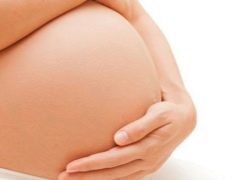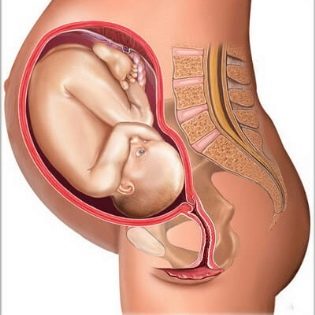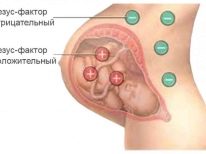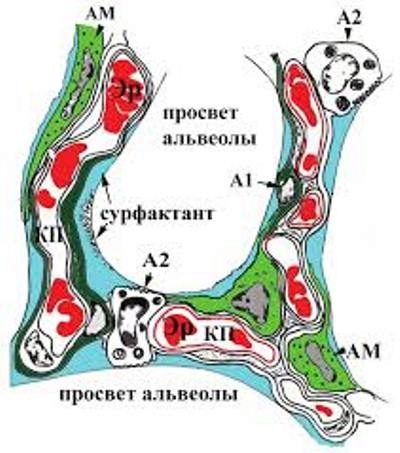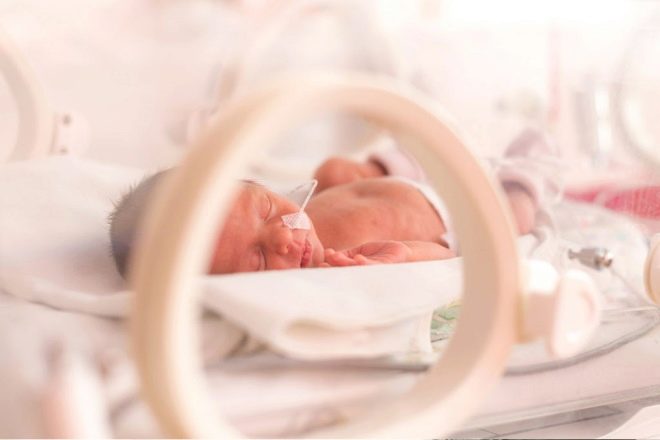Causes of preterm labor, symptoms and first signs
Nature has conceived a certain duration of pregnancy in a woman. It is exactly 10 lunar months or 9 calendar months — the very term that a child needs in order to grow and mature, to be ready for life outside of her mother's womb. Female body this period is given for optimal preparation for the generic process. Premature birth is a big risk for the mother and especially for the baby. In this article, we will explain why labor activity starts ahead of time, what the consequences may be and how to avoid preterm labor.
What it is?
This term refers to childbirth, which begins between the 22nd and 37th week of pregnancy, inclusive. More recently, in Russia, a child who was born from 22 to 28 weeks was considered a late miscarriage, a child in the full medical sense of the word began to be considered only when he managed to survive for a week. From this point on, the fact of birth could be documented. In 2012, it was decided to change the criteria, as the resuscitation service stepped far forward, and doctors learned how to care for seriously premature babies.
The existing classification divides early deliveries into threatening (state of threat), beginning (first signs) and beginning (generic activity), the latter option being irreversible. According to statistics, a premature birth of a child ends up to 13% of pregnancies. In this case, they spontaneously begin in about 80% of cases, another 20% are childbirth, which had to be provoked artificially in the presence of strict medical indications.
About half of preterm labor proceeds with the whole bladder and contractions. Up to 40% of births ahead of time are not accompanied by contractions, but occur on the background of early discharge of amniotic fluid. Artificially provoked childbirth is usually prescribed for emergency reasons - the serious condition of the mother with the threat of life, aggravated and deteriorating state of health of the fetus, its death, developmental anomalies that are incompatible with the life and further development of the child.
Statistics show that approximately 5% of all early births begin at 22-28 weeks. At the same time, children are considered to be deeply premature, their weight is less than a kilogram and their survival projections are extremely unfavorable.
15% of all births ahead of time are from 28 to 31 weeks. Children are considered to be seriously premature, but the chances of salvation are more favorable. Every fifth childbirth ahead of time falls, according to statistics, for the period from 31 to 34 weeks. Most preterm labor occurs between weeks 34 to 37.
Despite all the achievements of modern medicine, new drugs and precise equipment, it is not possible to reduce the percentage of preterm birth. Unfortunately, up to 70% of babies die in the first few days in the case of their hasty birth, despite the best efforts of resuscitation specialists. The risk of stillbirth is increased by 13-15 times compared with full-term pregnancy. Nearly half of the severely premature babies who managed to survive suffer from severe disorders of the nervous system, such as cerebral palsy, blindness and deafness, and sometimes deaf-blindness, severe ailments of the heart and respiratory organs.
The reasons
There is no distinct and unified theory explaining the causes of the violation of natural mechanisms and the mechanisms of development of preterm labor. Since there are a lot of risk factors, in most cases obstetrician-gynecologists fail to establish the true root cause. Therefore, it is not possible to predict such genera. But a huge number of factors that can provoke premature birth, still managed to systematize and conditionally divided into several categories:
- maternal risk prerequisites;
- causes of pregnancy;
- socio-biological conditions.
The first group includes the burdened obstetric history. Most often, patients give birth ahead of schedule who have had several abortions, which were used to cure the uterus cavity for therapeutic or diagnostic purposes. Any operation on the uterus in the past is a potential risk of developing preterm activity ahead of time. Also, very often women give birth prematurely who have had a premature birth.
The second group is very numerous. Current pregnancy and its possible pathology are sometimes crucial. A high risk of premature birth has expectant mothers with high and low water. Against the background of the premature rupture of the sac of the sac or the strain of it, labor ahead of time begins quite often. The chances of abnormal preterm labor and in patients with weak cervix (with isthmic-cervical insufficiency), as well as those with cervical diseases related to precancerous, are increasing.
The prevalence of the “childhood site”, genital diseases (especially ureaplasmosis, cytomegalovirus infection and chlamydia), infections that have already been transferred during pregnancy (rubella, chickenpox, influenza), problems with the cardiovascular system, diabetes mellitus, preeclampsia and hypertension are far from complete diagnoses in which doctors primarily think about the fact that a woman has a high risk of giving birth prematurely.
Some features of the state of the baby during pregnancy are also considered dangerous and disturbing, for example, the presence of genetic pathologies, hemolytic disease, which developed on the background of Rh-conflict with the mother, which has a negative Rh factor.
The third group of risk factors includes the low social status of the pregnant woman, her malnutrition, chronic vitamin deficiency, alcohol consumption, smoking, taking drugs during the period of gestation of the baby. This also includes constant stress, as well as the age of the pregnant woman (before the age of 18 or after 40 years). The provoking factor is also the difficult working conditions of the woman during the gestation period.
It is important to know that the probability of preterm delivery increases with the birth of twins or triplets, with the pelvic location of the fetus in the uterus. Also, more often than not, boys decide to appear prematurely - male children are considered by experts as a separate risk factor.
Symptomatology
Since many risk factors have been identified, the clinical picture may be different, it all depends on how many factors and which factors are combined together in a single case. In order to understand what stage a woman is at, it is necessary to assess the contractile activity of the reproductive organ, the integrity and intactness of the fetal membranes and changes in the birth canal.
If a woman has a threatening premature labor, then in most cases there are unpleasant, annoying and prolonged pulling back pain in the lower abdomen, increased muscle tone of the uterus and its episodic reduction. The child begins to move more actively with the threat, he is worried, the movements are almost constant and sometimes painful.There may be discharge from the vagina on the type of ichor.
The beginning preterm labor is characterized by quite strong pain in the abdomen. There are regular contractions, the cervix is shortened, smoothed out before the prescribed time, the mucus plug can leave the place in the cervical canal. Appear pink or serous blood, often diagnosed by leakage or complete rupture of amniotic fluid. The beginning of childbirth appears almost the same as the birth in full-term pregnancy - contractions increase, the interval between them is reduced, the head of the baby falls and presses against the exit to the pelvis, waste water.
It should be noted that water is poured ahead of time at such births in most cases. The battles themselves are often uncoordinated. Deliveries can be rapid or prolonged, increased risk of discharge of the placenta before the birth of the baby. In this case, serious bleeding develops. Children in such childbirth often experience hypoxia, and complications after the end of labor are more likely for the mother and fetus than during full-term pregnancy.
Diagnostics
Since there are no specific symptoms in principle, and there are a lot of factors causing early labor, it is difficult to diagnose pathological labor before the time. The only way, a kind of "gold standard" diagnosis is to determine the presence of fibronectin in the secretions from the genital tract. If the woman does not threaten the early labor, then this substance is not detected in the secretions. Fibronectin usually appears in the early stages and before childbirth, when the body begins to prepare for the birth of a baby.
For a long time in Russia, a special test for the determination of fibronectin was not used because of its absence, whereas in Europe the technique has been known for a long time. Today in our country there is a test system "Aktim Partus". It is this system for determining the readiness of the cervix that is able to detect traces of the desired substance in the vaginal discharge. The downside is that a woman cannot take a test at home, they do it in the hospital.
A positive result does not mean that childbirth will occur in the near future. It may well be a few weeks before the start of the bouts, and therefore the accuracy of the Actim Partus leaves much to be desired. Also applied tests for rupture of the membranes - PRPO.
Home systems are not too accurate, but special tests for amniosensitivity in a gynecological hospital or maternity hospital may give a more accurate answer to the question of whether there is a threat of premature birth, whether they begin.
In addition to tests, a woman with complaints resembling a clinical picture similar to preterm delivery was shown to have a transvaginal ultrasound scan that measures the length of the cervix. If an ultrasound examination reveals a cervical length of 3 cm or more, the probability of giving birth within a week does not exceed 1%. But already with a length of 2.5 centimeters, the risk of childbirth grows to 6%.
With the appearance of pain in the lower back and lower abdomen for a period of 22 to 37 weeks, the woman should immediately be taken to hospital, and already there the doctors will find out what these pains can be associated with. It should be noted that in more than 60% of pregnant women, such signs have nothing to do with the threat of premature delivery. They can be caused by problems with the intestines, kidneys and urinary system, and the threat of uterine rupture over the old scar after cesarean section or surgery, if there is one.
Help
If a woman is under suspicion of any of the stages of premature pathological childbirth, she should not be at home - it is necessary to go to the hospital and be under the round-the-clock supervision of medical specialists.If there is a threat or early labor giving birth, it is still quite possible to save and prolong the pregnancy in order to give the necessary time for maturation by the lungs of the baby. On whether they can open up, it depends on whether the child will live, whether it will be possible to save him.
At the beginning of childbirth, the extension of pregnancy is impossible, proceed to the urgent choice of delivery tactics.
If the situation allows, and a decision is made to extend the pregnancy, the woman is shown strict bed rest. She is given light sedatives to rule out anxiety, feelings, stress. Supposed to take antispasmodics, which will help prevent the increased tone of the uterus. To help the lungs of the child to ripen, they begin to inject glucocorticoids (Dexamethasone, for example). Such treatment has its contraindications, and therefore can not always be applied.
The woman is prescribed additional symptomatic medications - “Nifedipine” at high pressure, vitamin preparations with a deficiency of key vitamins in the body, “Utrogestan” with a low level of the hormone progesterone, which is responsible for the preservation of pregnancy and the well-being of the fetus, antibiotics when infections are detected. When isthmic-cervical physical failure and weakness of the cervix, unable to hold the fetus in the uterus, can put an obstetric pessary or surgical sutures on the neck.
Can help even in case of leakage or discharge of water. If the child is too early to be born and there are high risks that it will not be possible to save him, and the birth has not begun, the woman is also placed in bed. She is in a separate sterile room. Scaffolds are changed every two hours, using only sterile preparations. The treatment is aimed at maintaining the ability of the amniotic membrane of the fetal bladder to produce an aminiotic fluid and partially compensate for the “leakage”.
At any time, doctors will be ready to take delivery if the treatment fails. The generic process will also have its own specifics.
Features of reference
Clinical recommendations for the conduct of the generic process, which began earlier than expected, include several important steps. First of all, doctors need to soberly assess the current situation and weigh all the risks. Then choose the method of obstetric aid. Three options: the patient does not have obstetric benefits, just watching the development of childbirth, active intervention or cesarean section for emergency reasons.
Much of this choice depends on the duration of pregnancy, because the birth at 7 months will differ significantly from the birth at 35 weeks. But in any case, at any time a woman must install CTG sensors to monitor the condition of the baby.
Statistics says that more than a third of all generic processes that start prematurely occur with complications and anomalies: contractions do not have a clear coordination, they are very strong or very weak. Therefore, it is permitted to use antispasmodics with them, which will allow to achieve a certain degree of muscle relaxation, as well as epidural anesthesia. It is permissible to use hormonal drugs that will intensify contractions if they are weak, and also give women drugs that will somewhat curb uterine contractions if they are very strong. Quite often, during preterm labor, there is a reasonable need for episiotomy - perineal dissection.
The choice in favor of a caesarean section is made in cases where the child is in the wrong presentation, when uterine bleeding has opened, there are signs of placental abruption, and during the beginning of rapid births, the baby’s body and umbilical cord have dropped out of the uterus. Fetal hypoxia is also the basis for operative labor.
Possible problems and complications
In a full-term baby in the lungs in the last weeks of the mother’s pregnancy, a surfactant is produced vigorously - an active substance that does not allow alveoli to stick together. The ability of the alveoli to expand and deflate and provides complete gas exchange. If the surfactant is not sufficiently developed (and at 28, 30 weeks of gestation, this is the case), then the risk of developing distress syndrome, an acute respiratory failure, in which spontaneous breathing will be impossible, increases. With each following week, the amount of surfactant increases, and therefore the prognosis for saving a child is 31-32 weeks higher than at 28 weeks, and at 36 weeks it is significantly higher than at 34.
But distress syndrome alone doesn’t exhaust all possible problems. Alas, cerebral brain disorders are often diagnosed in premature babies, because the brain structures also did not have time to ripen, a hemorrhage in the brain is often found. The consequences can be very different, it all depends on the severity and depth of the hemorrhage: from mild neurological disorders to severe mental and nervous diseases that will lead to disability. The risk of injury to the cervical spine during physiological labor is also increased.
The likelihood of postpartum complications is higher in women with childbirth. When the baby is born prematurely, serious breaks in the perineum, cervix, vaginal walls often occur, and after childbirth such puerperal women are more often diagnosed with infectious inflammatory processes in the uterus, infection and long healing of the stitches.
If the child was born before term
A premature baby can survive and be completely healthy. But even in this case, the first days and weeks of his life will still be held in intensive care. The resuscitation team is present in the delivery room, and when a baby arrives, it immediately begins to provide it with the necessary set of auxiliary activities. In addition to the distress syndrome, the premature baby is threatened with rapid heat loss, because the crumb has not had time to gain weight and you need the amount of subcutaneous fat. Therefore, the first measures are the provision of artificial ventilation and warming: the baby is placed in a special hood in which a certain humidity and temperature is maintained.
To talk about possible future prospects (although doctors try not to do this, because the situation is essentially unpredictable), neonatologists give an estimate of the degree of prematurity of the babies. There are four of them:
- the first - the most favorable (giving birth was at 36-37 weeks, the baby weighs more than 2 kilograms);
- the second - the most unpredictable (childbirth passed between 32 and 35 weeks, the child weighs about 2 kilograms);
- the third - heavy (delivery took place from 28 to 31 weeks, the weight of the child is more than a kilogram);
- the fourth - extremely severe, extreme (a child was born before 28 weeks, weight less than a kilogram).
Externally, children look disproportionate (the head is big), lanugo can be observed, the skin is wrinkled and red, subcutaneous fat is absent or is not present in sufficient quantity. The springs on the head are open and soft.
But the main danger lies not in how the child looks, but in the way his internal organs work. They are immature, unprepared for independent work. Narrow airways, chest compliance are characteristic of all premature babies. Breathing, if it is - uneven, superficial.
Due to the immature heart of the baby, an unstable pulse, deafness of heart tones are observed. The vessels are brittle and very fragile, it causes hemorrhages, including in the internal organs. Muscle tone is very weak, reflexes are reduced or absent. Such children are more prone to anemia, edema and dehydration (due to the immaturity and functional unavailability of the kidneys to full activity), the risk of sepsis is high.
Immunity of premature babies is very weak.If the battle for life in the maternity hospital is won, then in the first 2-3 years the parents will have to provide such children with adequate care in order to prevent frequent viral diseases that may adversely affect the child’s health.
Next pregnancy - risks and predictions
If a woman has a premature birth, then the next pregnancy should be planned very carefully and responsibly. Of course, it is advisable to still find and eliminate the reasons that caused the preterm labor, it will increase the likelihood of safe childbirth and quite urgent, timely delivery next time. But in practice, it is not always possible to find the cause.
Nevertheless, it is still necessary to undergo a detailed physical examination before planning conception. Due attention should be paid to the health of all organs and systems, and not just sexual. It is recommended to make an analysis of thyroid hormones, it is their lack that sometimes causes both the first and repeated preterm births. It is necessary to make an ultrasound of the abdominal organs and blood vessels, organs of the small pelvis, ECG, analysis of genital infections and other infectious diseases.
According to statistics, the risk of repeated premature birth is high - about 40%. But it is quite realistic to reduce it if a woman visits the doctor, in time to pass all the necessary tests, on the first request to go to the hospital for observation and treatment, to monitor the increase in weight and blood pressure.
According to the established practice, the same terms are considered dangerous. If a woman suffers from habitual miscarriages, she knows that subsequent miscarriages are most likely exactly at the period in which the previous ones occurred. The same statement is true for preterm labor. If a woman has given birth at 30 weeks, then when she is bearing the next pregnancy, even in the absence of signs of danger, she will be advised to spend her 30th week in the hospital, where she will be monitored, provided with supportive treatment aimed at preventing possible Repeat negative scenario.
A woman can get pregnant after the premature birth of a child without any particular difficulties; the pathological termination of a previous pregnancy has no particular effect on fertility.
Prevention
The prevention of the development of preterm labor is recommended to pay special attention. In this case, all preventive areas are divided into several groups.
- Primary. It is desirable to implement it before pregnancy. It includes contraception, avoiding scraping and abortion, including vacuum and medication. Women must be informed that they have prerequisites for preterm birth, if they are found at the planning stage of pregnancy. Patients who are planning to conceive with the help of in vitro fertilization should be warned about high risks. Taking vitamins before conception and in the first months of the onset of pregnancy, according to the latest data from the Ministry of Health, is not considered an effective measure for the prevention of preterm birth.
- Secondary. This set of measures implemented in the process of pregnancy. It is important to convince a woman not to smoke and not to take alcoholic beverages while carrying a baby. The emerging risk factors should also be eliminated as they arise: when detecting weakness of the cervix, to make an informed decision on the use of a pessary or stitching, with increased uterus tone, to prescribe antispasmodics and hospitalize the pregnant woman to a gynecological hospital for ongoing observation.
Progesterone prophylaxis is considered effective; women at high risk with drugs containing this hormone in various forms of release can be shown up to 36 weeks of pregnancy.
Women reviews
According to women, preterm labor most often begins unexpectedly.It is not the process itself that is frightening, but the possible consequences for the child. According to the moms who nursed such babies, parents will need a huge supply of faith, patience and a great love for the newborn. If you believe in a child, then he usually copes, survives and grows to the joy of mom and dad. Abandoned children and toddlers of desperate mothers survive worse and more often become disabled due to the irreversible effects of prematurity.
See the next video for more details on the causes of preterm labor.
